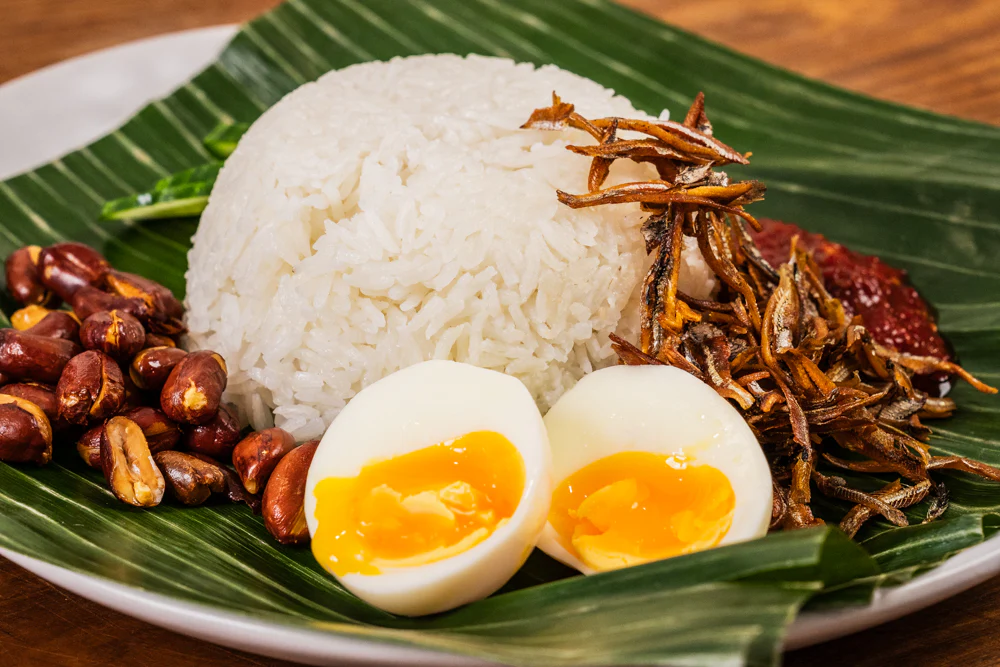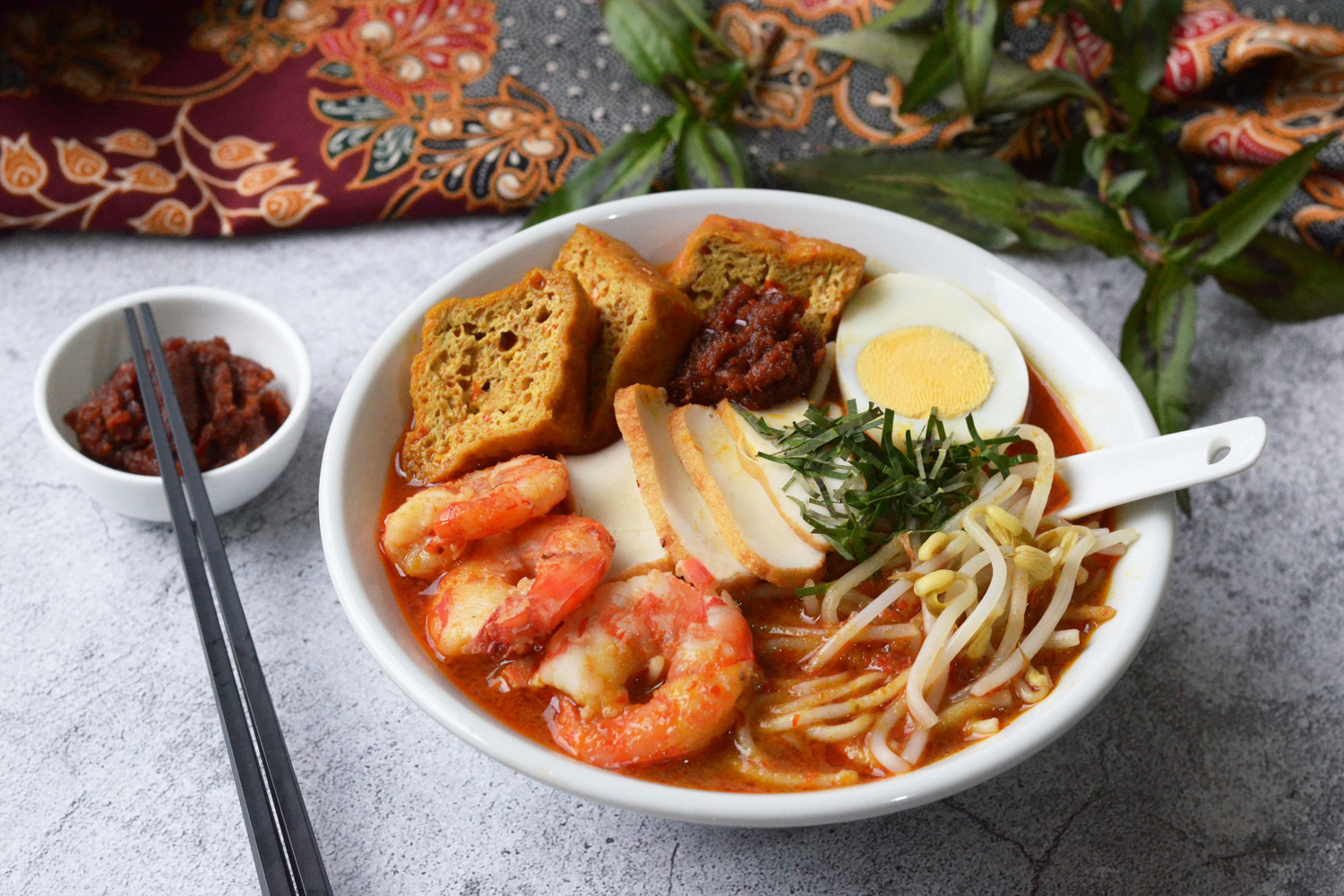pokomde.info – Nasi lemak is widely regarded as the national dish of Malaysia and is beloved throughout Southeast Asia. This dish, featuring rice cooked in coconut milk and served with a variety of flavorful sides, is a beautiful representation of Malaysia’s diverse culinary heritage. Known for its fragrant aroma and a perfect balance of flavors, nasi lemak is a versatile meal that can be enjoyed at any time of the day, from breakfast to dinner.
The Core Ingredients
At the heart of nasi lemak is the coconut milk rice. The rice is cooked in coconut milk (or cream) and often infused with pandan leaves (screwpine), which gives it a subtle, aromatic fragrance. This “rich” rice is the defining feature of the dish, as “nasi lemak” translates to “rich rice” in Malay, referring to the luxurious texture from the coconut milk.
Traditional Accompaniments
A classic serving of nasi lemak is typically accompanied by a combination of flavorful and contrasting sides that provide richness, crunch, freshness, and heat. These essential components include:
- Sambal: A spicy, sweet, and tangy chili paste made from a blend of chilies, onions, and shrimp paste, which gives the dish its signature heat.
- Ikan bilis (fried anchovies): Crispy, salty fried anchovies add crunch and a savory kick.
- Hard-boiled or fried egg: A simple but important source of protein that balances the other elements.
- Cucumber slices: Fresh cucumber provides a cooling, refreshing contrast to the heat of the sambal.
- Peanuts: Roasted peanuts give the dish another layer of crunch and texture.
Popular Additions and Variations
While the basic components remain consistent, nasi lemak is incredibly versatile, with numerous variations that enhance its flavor. Some common additions include:
- Fried or curried chicken: Often served alongside the rice for a heartier meal.
- Rendang: A slow-cooked beef or chicken dish in a rich, spiced coconut gravy, complementing the coconut rice perfectly.
- Sambal sotong: Spicy squid cooked in sambal adds a seafood element to the dish.
- Ayam goreng (fried chicken): Crispy fried chicken adds both texture and flavor, making it a favorite pairing for many.
These additions make nasi lemak a flexible dish, appealing to a wide range of palates and preferences.
A Rich Cultural History
Nasi lemak has humble origins as a farmers’ meal, traditionally eaten by workers who needed a nutritious and energy-packed dish to sustain them through long days of labor. Over time, it evolved into a dish enjoyed by all Malaysians, regardless of social class. Whether eaten at roadside stalls, hawker centers, or high-end restaurants, nasi lemak remains a cherished part of Malaysia’s culinary landscape.
Its appeal has spread beyond Malaysia, with variations of the dish enjoyed in Singapore, Indonesia, and other parts of Southeast Asia. Each region often brings its own twist, incorporating local flavors and ingredients.
Nasi Lemak in Modern Cuisine
Today, nasi lemak has not only retained its traditional roots but has also evolved with modern culinary trends. Creative reinterpretations of the dish, such as nasi lemak burgers or nasi lemak sushi rolls, have emerged in recent years, showcasing its adaptability while still honoring its authentic flavors. These innovations have helped the dish maintain its relevance and appeal in both local and international food scenes.
Conclusion
Nasi lemak is more than just a dish—it’s a symbol of Malaysian culture and heritage. The fragrant coconut rice, paired with spicy sambal, crispy anchovies, fresh cucumbers, and roasted peanuts, creates a harmony of flavors that captures the essence of Malaysia’s rich culinary traditions. Whether enjoyed in its classic form or with modern twists, nasi lemak continues to be a beloved staple, enjoyed by millions in Malaysia and beyond.
Its simplicity, versatility, and rich history ensure that nasi lemak will remain a cherished dish for generations to come.








